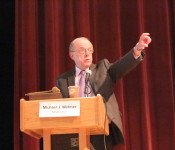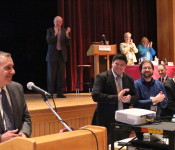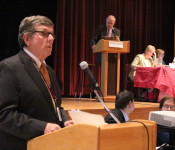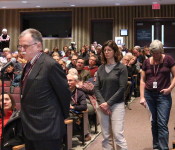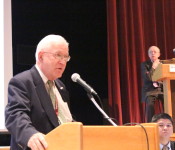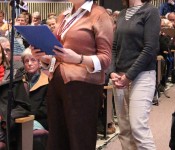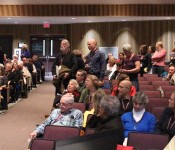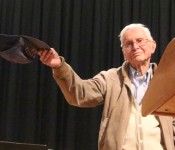Receiving four-and-a-half (out of five) stars on the review and ranking website Yelp says a lot about how people think of a business or service.
You can add Belmont’s Town Administrator David Kale to that high-standard list as the official who manages the day-to-day operations of the town’s departments received an enthusiastic annual evaluation from the Belmont Board of Selectmen its Tuesday, Dec. 30 meeting.
“It was all very positive,” said Board Chair Andy Rojas.
During the meeting, the board announced Kale will receive a second three-year contract through July 2017 to stay in the position he’s held since August 2012.
“We are finishing the wording” in the contract, said the Cambridge-resident, who will receive a two percent cost-of-living adjustment to his current salary retroactive to July 1.
Kale’s evaluation was a tabulation of individual assessments by each selectmen, said Diane Crimmins, the town’s human resources director. The board appraised Kale’s expertise in professional tasks, public relations, organizational leadership, personnel management, leading the budget process and planning. Kale received a combined rating of 4.5 out of 5, said Crimmins.
The three selectmen praised Kale on improving morale in town personnel and working collaboratively with departments, and the school district, “which is critical is a small town like Belmont,” said Rojas.
Kale’s handling of the annual budget – which included creating a “one budget” process that requires a close working relationship between the town and the school committee and district – was sighted by the board.
“You’ve enhanced the public budget process,” said Selectman Mark Paolillo.
Kale, in turn, acknowledged the work of “a great group of department heads and employees” who “makes the work happen.”
“This is not done in a vacuum,” said Kale.
